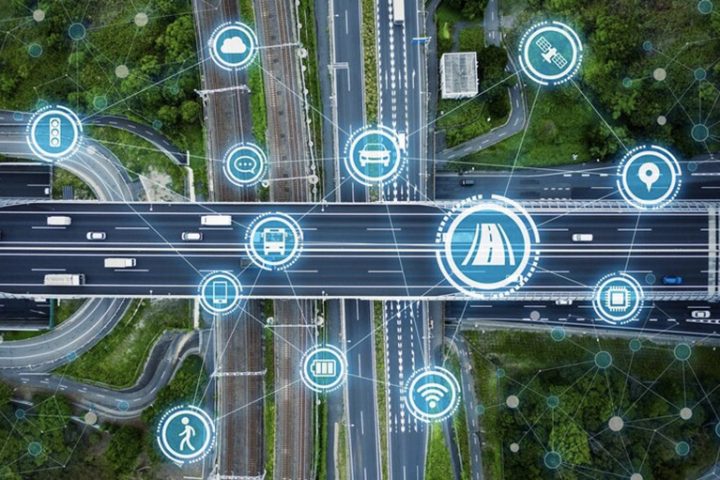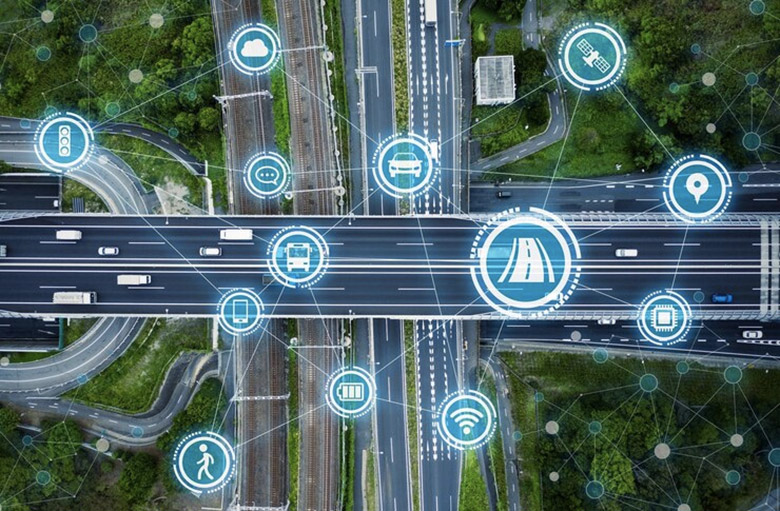On top of revolutionising how people interact with the environment, smart technologies can also be used to make communities safer and healthier. Traffic safety and management, in particular, is a key area where the use of data, sensors, and automation can make a significant difference. Using smart solutions to enhance transportation systems can pave the way for more efficient and safer road networks that benefit both motorists and pedestrians alike. Here’s a list of some of the different types of smart road solutions that are currently making a positive impact in communities around the world.
Intelligent Traffic Management Systems (ITMS)
Intelligent traffic management systems (ITMS), sometimes called intelligent traffic systems or intelligent transport systems, utilise advanced sensors, cameras, and data analytics to monitor traffic flow in real-time. These solutions gather and analyse information, which is then used to smartly adjust traffic signals, manage lane assignments, and provide current traffic information. This optimises traffic flow and reduces congestion.
London’s Split Cycle Offset Optimisation Technique (SCOOT), which was initially developed in 1979, is a pioneering example of this system. Where its sensors are installed, SCOOT is able to reduce delays by 15%. More than 350 towns and cities around the world currently use this system. This proactive approach to traffic management not only enhances efficiency but also improves road safety by reducing the risk of accidents caused by traffic bottlenecks, especially in busy urban spaces.
Dynamic Lane Management
Although necessary for road construction, repair projects, and emergency situations, road closures often lead to traffic congestion. Dynamic lane management systems can help calm traffic and prevent collisions while reducing traffic buildup by up to 80%. The solution accomplishes all these by leveraging sensors and automated controls to adjust lane configurations based on real-time traffic conditions.
By dynamically allocating lanes, such as reversible lanes or variable speed limits, dynamic lane management systems can optimize traffic flow and enhance safety on the road, especially along work zones. The Zipper Merge system, implemented in Minnesota, USA, is a demonstration of how such a system works. In this particular example, a technique called “late merge” is used to encourage drivers to merge at the last possible moment before lane closures.
Connected Vehicle Technology
Connected vehicle technology, an example of which is Audi’s Traffic Light Information (TLI) system, enables vehicles to communicate with roadside infrastructure and other vehicles and access real-time traffic information and warnings about hazards. By enhancing situational awareness for drivers and enabling features such as adaptive cruise control, connected vehicle technology improves safety and reduces accidents. TLI, in particular, works by alerting drivers to upcoming signal changes and allowing them to adjust their speed accordingly. This reduces the likelihood of unnecessary stops. Additionally, by facilitating smoother traffic flow and reducing unnecessary braking and acceleration, connected vehicles contribute to overall traffic efficiency.
Smart Intersection Technology
Road intersections result in numerous traffic accidents every year. Smart intersection technology thus aims to address the issues in this particular component of road infrastructure through the use of sensors and communication systems that optimize traffic flow and reduce the risk of collisions. Features such as adaptive traffic signals and pedestrian detection systems help manage traffic more effectively and enhance safety for motorists and pedestrians alike.
A version of this system can be found in Singapore’s Smart Traffic Management System (STMS), which employs a combination of sensors, cameras, and artificial intelligence to optimize traffic flow at intersections. Its ability to analyse real-time traffic data and adjust signal timings dynamically allows STMS to help in reducing congestion. It also contributes to minimising waiting times and improving overall traffic efficiency in urban areas.
Electronic Toll Collection (ETC)
Electronic toll collection (ETC) systems streamline toll collection processes by enabling seamless and efficient transactions without the need for toll booths or manual payment. Directly addressing traffic buildup at tolling points greatly contributes to improving traffic flow and enhancing the efficiency of toll roads and bridges. Additionally, by minimising the need for vehicles to come to a complete stop, ETC systems contribute to smoother traffic flow and reduced fuel consumption.
Many places in the world now make use of such a system, which is used on toll roads and enables drivers to pay tolls electronically using a transponder mounted on their vehicle. As vehicles pass through tolling points, the system automatically deducts the appropriate toll amount from the driver’s prepaid account. This simplified process eliminates the need for manual payment and reduces congestion at toll booths.
Automated Speed Enforcement
Traffic law enforcement can also be made safer and more efficient with the assistance of smart solutions. One way of doing this is by using automated speed enforcement systems, which comprise cameras and sensors to detect vehicles that are speeding or violating traffic laws. These systems allow concerned government agencies to automatically issue fines or warnings to violators, improving overall compliance with speed limits. Additionally, by discouraging dangerous driving behaviour, automated speed enforcement contributes to overall traffic safety and efficiency.
Smart Street Lighting
Smart street lighting systems use LED lights equipped with motion sensors and adaptive controls to adjust brightness levels based on traffic, weather, and daylight conditions. The adaptive street lighting system in Oslo, Norway, for example, uses sensors and intelligent controls to adjust lighting levels based on factors such as traffic flow, pedestrian activity, and ambient light conditions. By enhancing visibility and safety for drivers and pedestrians, smart street lighting contributes to overall road safety. Additionally, by reducing energy consumption and light pollution, smart lighting solutions promote environmental sustainability and create more liveable urban environments.
The integration of smart solutions into road infrastructure and transportation systems offers numerous benefits, including improved traffic efficiency, enhanced road safety, and a more sustainable urban environment. By leveraging innovative technologies such as sensors, data analytics, and automation, we can create smarter, safer, and more liveable cities for generations to come.






















 Top 10 Trusted Maid Agencies in Singapore
Top 10 Trusted Maid Agencies in Singapore  The 7 Most Romantic Restaurants in Singapore
The 7 Most Romantic Restaurants in Singapore  5 Best Sofa Cleaning Services in Singapore
5 Best Sofa Cleaning Services in Singapore  10 Best Aircon Services in Singapore
10 Best Aircon Services in Singapore  10 Best House Movers in Singapore
10 Best House Movers in Singapore  10 Best House Cleaning Services in Singapore
10 Best House Cleaning Services in Singapore  Illuminate Spring with Blooms across Lendlease malls
Illuminate Spring with Blooms across Lendlease malls  2XU Compression Run 2025 Singapore
2XU Compression Run 2025 Singapore  Solo Travel and Mental Health: Discovering Wellness Through Independence and Adventure
Solo Travel and Mental Health: Discovering Wellness Through Independence and Adventure  5 Ways to Improve Your Business’s Energy Efficiency
5 Ways to Improve Your Business’s Energy Efficiency  7 Types of Smart Road Solutions That Help Improve Traffic Efficiency and Safety
7 Types of Smart Road Solutions That Help Improve Traffic Efficiency and Safety  5 Best Hokkien Mee in Singapore to Die for
5 Best Hokkien Mee in Singapore to Die for  7 Best French Restaurants in Singapore to Celebrate Life
7 Best French Restaurants in Singapore to Celebrate Life  5 Best Old-school Pubs in Singapore for a Dose of Nostalgia
5 Best Old-school Pubs in Singapore for a Dose of Nostalgia  7 Best Bowling Centres in Singapore to Knock down Some Pins
7 Best Bowling Centres in Singapore to Knock down Some Pins  10 Best Places To Propose In Singapore Which Guarantee Her To Say Yes
10 Best Places To Propose In Singapore Which Guarantee Her To Say Yes  5 Exciting Weekend Getaways Away from Singapore
5 Exciting Weekend Getaways Away from Singapore